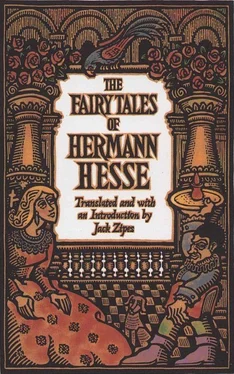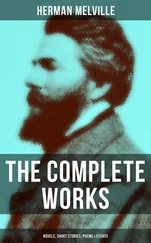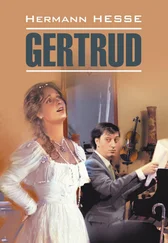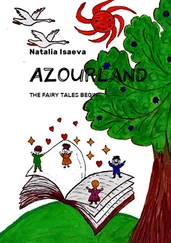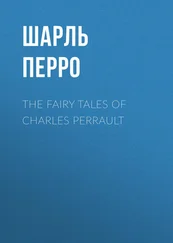Hermann Hesse - The Fairy Tales of Hermann Hesse
Здесь есть возможность читать онлайн «Hermann Hesse - The Fairy Tales of Hermann Hesse» весь текст электронной книги совершенно бесплатно (целиком полную версию без сокращений). В некоторых случаях можно слушать аудио, скачать через торрент в формате fb2 и присутствует краткое содержание. Год выпуска: 1995, ISBN: 1995, Издательство: Bantam Books, Жанр: Классическая проза, Сказка, на английском языке. Описание произведения, (предисловие) а так же отзывы посетителей доступны на портале библиотеки ЛибКат.
- Название:The Fairy Tales of Hermann Hesse
- Автор:
- Издательство:Bantam Books
- Жанр:
- Год:1995
- ISBN:9780553377767
- Рейтинг книги:5 / 5. Голосов: 1
-
Избранное:Добавить в избранное
- Отзывы:
-
Ваша оценка:
- 100
- 1
- 2
- 3
- 4
- 5
The Fairy Tales of Hermann Hesse: краткое содержание, описание и аннотация
Предлагаем к чтению аннотацию, описание, краткое содержание или предисловие (зависит от того, что написал сам автор книги «The Fairy Tales of Hermann Hesse»). Если вы не нашли необходимую информацию о книге — напишите в комментариях, мы постараемся отыскать её.
The Fairy Tales of Hermann Hesse — читать онлайн бесплатно полную книгу (весь текст) целиком
Ниже представлен текст книги, разбитый по страницам. Система сохранения места последней прочитанной страницы, позволяет с удобством читать онлайн бесплатно книгу «The Fairy Tales of Hermann Hesse», без необходимости каждый раз заново искать на чём Вы остановились. Поставьте закладку, и сможете в любой момент перейти на страницу, на которой закончили чтение.
Интервал:
Закладка:
The city had risen to dominate the neighboring cities and became the capital of a large district Solemn and venerable administrative buildings and banks, theaters and churches arose on the wide, cheerful streets, where the first house made of wooden planks and tin had stood next to piles of ash and puddles. Students sauntered to the university and the library. Ambulances drove cautiously to the hospitals. A deputy’s car was noticed and greeted by onlookers. In twenty huge schoolhouses made of stone and iron, the founding day of the famous city was celebrated every year with songs and speeches. The former prairie was covered with fields, factories, and villages and traversed by twenty railroad lines. The mountains had moved closer and were connected by rail that went right into the heart of the ravines. In the mountains or far away on the seacoast, the rich people had their summer homes.
One hundred years after its foundation, an earthquake shattered and devastated the city. It sprang up once more, however, and all the wooden structures now became stone; everything small was now big; everything narrow, wide. The railroad station was the largest in the country. The stock market was the largest in the world. Architects and artists decorated the rejuvenated city with public buildings, parks, fountains, and monuments. In the course of this new century the city gained the reputation of being the most beautiful and richest in the country and a city well worth seeing. Politicians and architects, technicians and mayors of foreign cities took trips to study the buildings, water system, administration, and other institutions of the famous city. At this time the new city hall was built, one of the greatest and most glorious edifices in the world. Since this time of new wealth and municipal pride coincided fortuitously with an upsurge in popular taste, in particular a taste for architecture and sculpture, the quickly growing city became a brazen and appealing work of wonder. A broad green belt of splendid parks surrounded the inner district, whose buildings were all made out of an elegant bright green stone, and on the other side of this ring, the lines of streets and homes extended until they became lost in the vast open country. A tremendous museum had numerous visitors and admirers, and its hundred rooms, courtyards, and halls portrayed the history of the city from its origins until its most recent development. The first gigantic entrance hall of this building complex had showcases and rooms depicting the former prairie, with carefully cultivated plants and animals and exact models of the earliest impoverished dwellings, alleys, and institutions. The young people of the city strolled through this hall and observed the course of their history from the tents and wooden sheds, from the first uneven rails to the splendor of the large municipal streets. Guided and instructed by their teachers, they learned all about the glorious laws of development and progress, how fine things were made from raw material, how human beings evolved from animals, how educated people developed from wild ones, and how culture was formed out of nature.
In the next century the city reached the high point of its glory, which unfolded in rich opulence and grew rapidly until a bloody revolution of the lower classes set a limit to this splendor. The mob began by setting fire to the large oil works a few miles from the city, so that a great part of the country with factories, farms, and villages was either burned down or deserted. The city itself experienced slaughter and cruelty of all kinds, to be sure, but it continued to exist and slowly recovered once again in more sober decades. Still, it was never able to regain its earlier buoyant life. During its low period a distant country far across the seas suddenly began to flourish. It exported wheat and iron, silver and other treasures in plenitude, due to an inexhaustibly fertile soil that willingly provided everything. The new country was tremendously attractive to people of the old world, whose talents were not being adequately used, and it appealed to their wishes and goals. Cities bloomed there overnight. The woods disappeared. Waterfalls were brought under control.
The beautiful city gradually deteriorated. It was no longer the heart and brains of a world, no longer the market and stock market of numerous countries. It had to feel satisfied just keeping itself alive and not fading away in the hustle and bustle of the new times. The creative powers of business and industry, insofar as they had not moved to the distant new world, had nothing more to build and conquer and little more to trade and earn. Instead, an intellectual life took root in the now-old cultural soil. Scholars and artists as well as painters and writers were generated by this city, which had now become solemn. These individuals were the heirs of those who had at one time built the first houses on the virgin ground, and now they spent their days smiling and devoted to quiet intellectual pleasures and goals. They painted the melancholy splendor of old mossy gardens with weather-beaten statues and green waters and recited gentle verses about the distant tumult of the old heroic times and about the silent dreams of tired people in old palaces. Due to their labors, the name and the fame of the city resounded once again throughout the world. If outside the city people might be shaken by wars or occupied in carrying out great plans and works, one knew that peace reigned in this silent secluded spot and that the glory of sunken times faintly glittered in the dusk: in the quiet streets overhung with budding branches, in the facades of tremendous buildings with colors changed by the weather, in the noiseless squares, and in the crusts of fountains covered with moss run down by water playing in soft music.
For many centuries the dreaming city was venerable, a favorite place for the young world, sung about by poets and visited by lovers. However, the people felt a powerful urge more and more to move to other parts of the earth. In the city itself, the heirs of the old native families began to die out or become impoverished. Moreover, the last intellectual flowering had long since experienced its heyday, and only a decayed infrastructure was left. The smaller neighboring cities had also completely disappeared and had become silent heaps of ruin, sometimes inhabited by gypsies and escaped convicts.
In the wake of an earthquake that spared the city, the course of the river was shifted and a part of the ravaged countryside was turned into a swamp and another part into a desert. In the mountains, where the remains of ancient quarries and summer homes crumbled away, the forest climbed up — the old forest. It saw the vast region lying bare, and it began to envelop this land piece by piece, so that everything became part of its green circle. In one area it passed swiftly across a swamp of whispering green and then across a stony region with tenacious young pine trees.
In the end there were no more citizens living in the houses, only packs of vagabonds, wild churlish people who took refuge in the crooked sinking palaces of olden times and let their goats graze in the former gardens and streets. Even these last inhabitants gradually died from disease and insanity. Ever since the rise of the swamps, the entire countryside had been infested with fever and had fallen into neglect.
The remains of the old city hall, which once had been the pride of its time, were still enormous and stood very tall. They had been celebrated in songs in all languages and in numerous legends of neighboring peoples, whose cities also had long since been neglected and whose culture had decayed. The name of the city and its past glory, eerily distorted, appeared in children’s tales, horror stories, and melancholy pastoral songs. Scholars of distant countries in the midst of their own golden age came sometimes to the site of the ruins on dangerous research trips, and the schoolboys of these distant countries eagerly discussed the mysteries of the old city. It supposedly had gates of pure gold and graves full of precious jewels, and the wild nomadic tribes of the region supposedly preserved the remains of thousand-year-old magic from fabulous old times.
Читать дальшеИнтервал:
Закладка:
Похожие книги на «The Fairy Tales of Hermann Hesse»
Представляем Вашему вниманию похожие книги на «The Fairy Tales of Hermann Hesse» списком для выбора. Мы отобрали схожую по названию и смыслу литературу в надежде предоставить читателям больше вариантов отыскать новые, интересные, ещё непрочитанные произведения.
Обсуждение, отзывы о книге «The Fairy Tales of Hermann Hesse» и просто собственные мнения читателей. Оставьте ваши комментарии, напишите, что Вы думаете о произведении, его смысле или главных героях. Укажите что конкретно понравилось, а что нет, и почему Вы так считаете.
